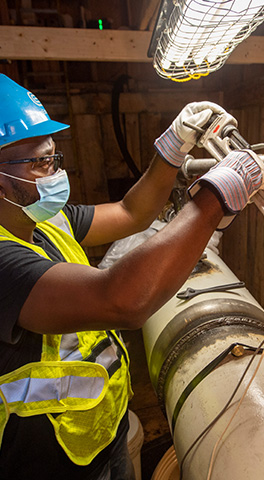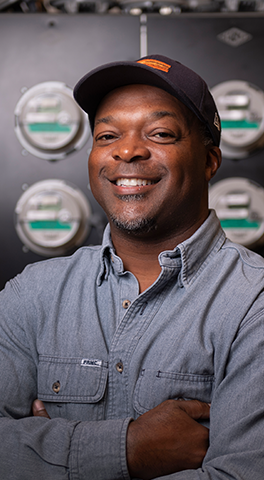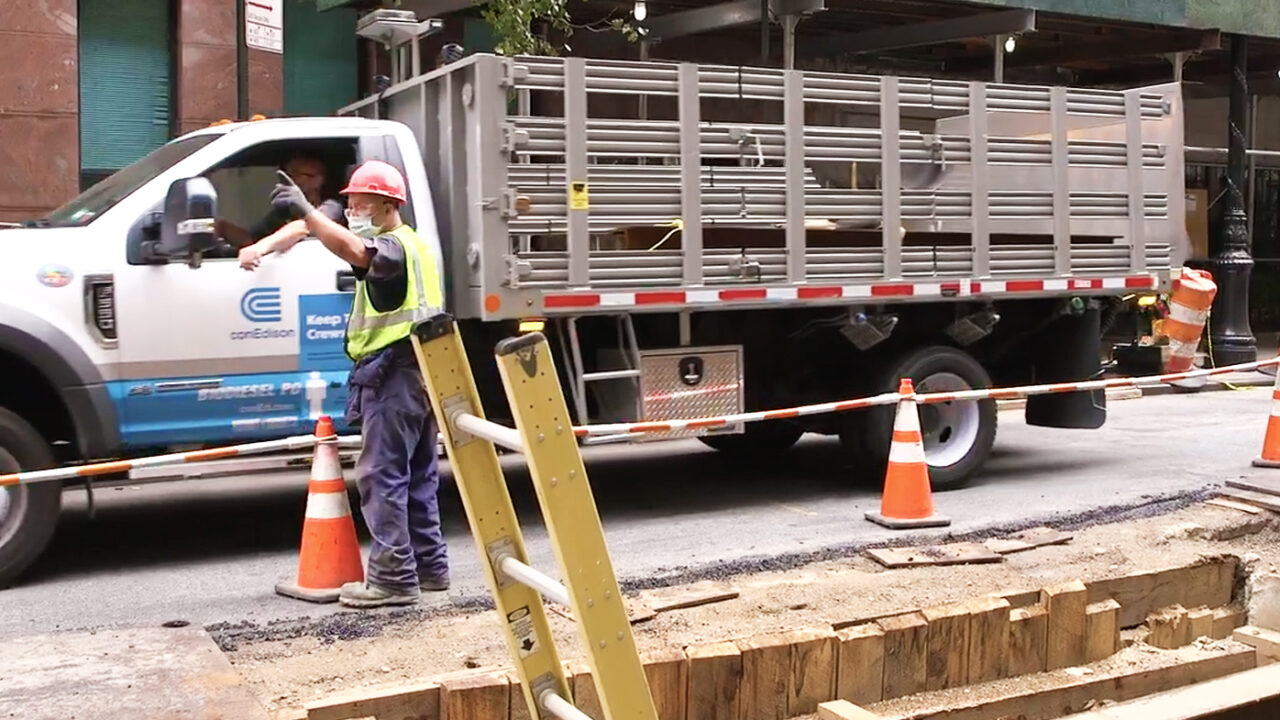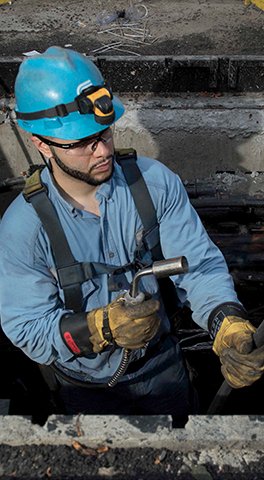
Operational Excellence
Core System Upgrades
The Advanced Meter Infrastructure (AMI) project is the largest project in company history. Some 5.3 million smart meters—comprised of roughly 4.0 million electric smart meters and 1.3 million gas devices—are being deployed across our service territory and will result in significant environmental, operational, and customer benefits.
Smart meters put unprecedented control into the hands of our customers. With the company’s updated website and digital customer experience, customers can see their energy usage in near real-time and make smarter, more informed decisions about managing their energy usage, controlling costs, and helping the environment.
Deployment of the communications network and smart meters began in 2017 and ends in 2022. More than 17,000 communications network devices have been installed throughout the company’s entire service area. In 2017, meter installations began in Staten Island, Westchester County, and Rockland County and mass deployment has been completed in these areas as well as in Orange and Sullivan Counties. Mass meter deployment continues in Brooklyn, Manhattan, the Bronx, and Queens.
To date, more than 4.15 million electric smart meters and gas devices have been installed. The AMI Operations Control Center has been staffed 24/7 to monitor the communications network, as well as the meters and gas modules connected to the network.
The AMI project team has also worked closely with Gas Operations and the AMI vendor to develop a first-of-its-kind, battery-powered natural gas detector that is integrated with the smart meter communications network. The natural gas detectors are safety devices that monitor the atmosphere where Con Edison’s gas service pipes enter our customers’ homes and buildings, most often in the basement. They provide an alert when natural gas levels in that area indicate a potential gas leak. Through the communications network, the detectors send a wireless alert to Con Edison if a potential gas leak is detected, allowing Con Edison and often the fire department to respond quickly. A pilot program to install 9,000 detectors began in October 2018 in parts of Westchester, and this pilot extended into Manhattan in 2019. The pilot program has been completed and the company began a multi-year program in September 2020 to deploy the natural gas detectors across our service territory. By the end of 2020, there were over 19,000 natural gas detectors installed.
Smart meter data provides Con Edison and O&R with insight into outages and restoration, allowing us to see when a customer has power and to avoid sending a crew to a location where power has been restored. These avoided “truck rolls” reduce costs as well as assist in our overall environmental goals by reducing CO2 emissions. In 2020, over 15,000 unnecessary truck rolls were avoided for CECONY and over 5,000 for O&R. The additional insight which smart meters provide regarding outages and restorations also allows us to update how we address “nested” or “embedded” outages, which are outages where there are often no visible signs of damage and which are only found when we energize our electrical facilities. We can utilize the AMI system to quickly notify operators of these conditions while enhancing the communications that customers receive regarding restoration of service. Improvements in this area will continue to roll out over the next few years.
Additionally, AMI will let CECONY operate the system at optimal voltages—known as conservation voltage optimization—reducing total energy consumption, as well as associated power-generation emissions. Analysis shows that information from the AMI system can be leveraged to reduce energy usage across CECONY’s service territory by approximately 1.5% on average, decreasing associated fuel use for committed generation resources. This results in 1.9% less total CO2 emissions across CECONY’s service territory and 1% total carbon reductions in New York State, due to reduction of power generated annually by fossil fuel plants. Engineers and planners will get more granular data, enabling potential design and operational improvements. CECONY began implementing voltage optimization in Staten Island at the end of 2018 and across Westchester and portions of Manhattan in 2019 as well as in the Bronx and Brooklyn in 2020. Voltage optimization will continue to be implemented across CECONY’s service territory through 2022.
Con Edison invested $1.449 billion in our transmission and distribution systems in New York City and Westchester County to prepare for summer 2021. The investment includes upgrades and reinforcements of 40 network transformers and 130 overhead transformers. We also plan to upgrade 34 underground feeder sections and 165 spans of overhead cable.
Con Edison projects that peak demand for electricity in the summer of 2021 will reach 12,880 megawatts. The record is 13,322 megawatts, which occurred at 5 p.m. on July 19, 2013. We are integrating new technology to make service more reliable. Con Edison has installed 5,500 devices in manholes to detect stray voltage, heat, and carbon monoxide in underground structures and communicate this information back to our engineers. Another 2,500 installations are planned for 2021. By remotely monitoring these conditions, we were able to reduce the risk of injury to the public or our employees. Con Edison has developed a new tool to inspect underground equipment in manhole structures for faults and other defects not visible to the human eye without having to remove the manhole cover. This new device is designed so crews can insert it through the vents in a manhole cover, reducing the setup time and physical effort needed to conduct a typical inspection. Using infrared technology, the device’s handheld monitor displays temperature anomalies that may indicate a need for equipment repairs. This tool is the latest addition to the technology Con Edison is deploying to help reduce the number of manhole events.
Electric Transmission Pipe Enhancement
 We are investing $25 million in 2021 to proactively upgrade our underground transmission system. We plan to address 3,500 trench feet of leak-prone transmission feeder pipe using the method of installing welded steel sleeves in corroded areas and recoating the refurbished pipe.
We are investing $25 million in 2021 to proactively upgrade our underground transmission system. We plan to address 3,500 trench feet of leak-prone transmission feeder pipe using the method of installing welded steel sleeves in corroded areas and recoating the refurbished pipe.
In 2020, we refurbished a total of 3,500 trench feet of piping and invested more than $10 million in spill response and remediation to improve the environment. We expect to continue to make significant progress in research and development to reduce the potential for future dielectric fluid spills. We are also continuing to pursue efforts to replace existing dielectric fluid-filled feeders with solid dielectric cable.
The bulk of our underground transmission system consists of 660 miles of 69-, 138-, and 345- kilovolt feeders encased in steel pipe surrounded by high-pressure dielectric fluid (a non-toxic synthetic compound similar to mineral oil). The conductors inside our steel pipes are wrapped in paper insulation, filled with and pressurized by the dielectric fluid at a nominal pressure of 200 pounds per square inch. In some feeders the dielectric fluid is circulated and cooled to provide enhanced current-carrying capability. Approximately nine million gallons of dielectric fluid is contained within the feeders and the associated pressurization and cooling plants.
Our leak-detection methods are some of the most sophisticated in the world:
- We use real-time monitoring of some of the largest volume feeders to constantly check their integrity.
- We infuse our dielectric fluid with a special tracer gas to help us rapidly locate and uncover leaks.
- If significant leaks occur, we selectively remove feeders from service, placing them on reduced pressure to slow the leak rate.
To repair leaks, we excavate to uncover the feeder pipes and apply a mechanical clamp to stop the flow. Permanent repairs are complete when a concentric steel barrel is welded over the clamp and the pipe. The pipe is then re-coated before the excavation is restored.
Reliability Performance
Con Edison is a recognized leader in reliability performance, consistently earning industry awards. Our overall system reliability in 2020 was 99.996%.
Con Edison’s system reliability exceeds national and New York standards
Customer Interruption Rate 2020 Customer Interrupted per 1,000 Customers Served
|
|
|
|---|---|
|
National |
1,050 |
|
New York (w/o Con Edison) |
1,000 |
|
Con Edison (Overhead) |
469 |
|
Con Edison (Overall) |
185 |
|
Con Edison (Network) |
86 |
National and New York State numbers from 2019
CECONY’s electric system is comprised of an overhead system as well as the largest underground network in the U.S.

The standards for measuring the reliability of distribution service are the System Average Interruption Frequency Index (SAIFI) and the Customer Average Interruption Duration Index (CAIDI). SAIFI is compiled annually, and the figure represents the number of service interruptions divided by the number of customers served. CAIDI, also compiled annually, represents the average time to restore service to interrupted customers. The CAIDI figure results from the total customer minutes of interruption divided by the total number of customers affected. For both figures, a low number indicates a better performance.
2020 NUMBERS FOR CECONY (electric)
SAIFI: 0.185
CAIDI: 116 minutes
2020 NUMBERS FOR O&R (electric)
SAIFI: 0.961
CAIDI: 100 minutes

Gas Main Replacement

In 2020, Con Edison modified the distribution main replacement goal from 90 miles to 62 miles due to impacts of the pandemic. The Company exceeded this goal by replacing 67 miles of cast iron and unprotected steel gas mains. In the last five years, the Company has replaced 421 miles of such mains. Besides upgrades to the distribution system, Con Edison continues to replace and upgrade the transmission system to ensure system reliability and incorporate new requirements established by the Pipeline and Hazardous Materials Safety Administration in 2019.
In 2020, O&R replaced 20 miles of leak-prone pipe. This replacement level met our company’s commitment to the New York State Public Service Commission.
